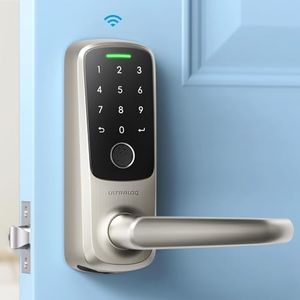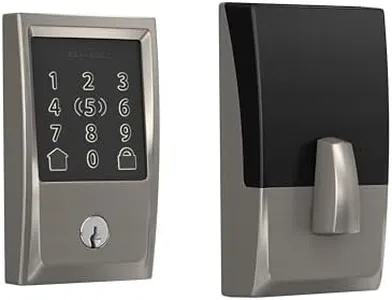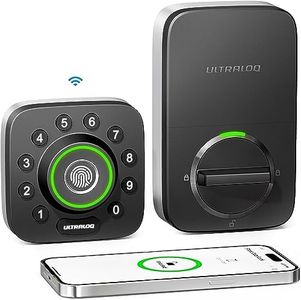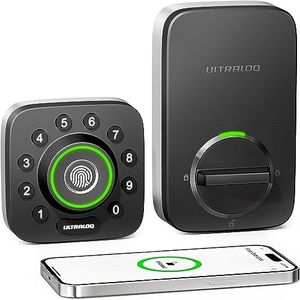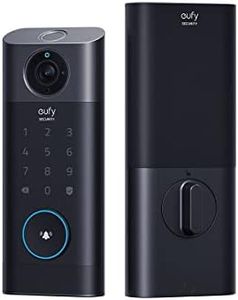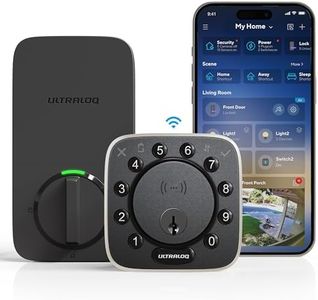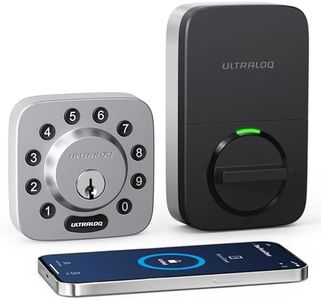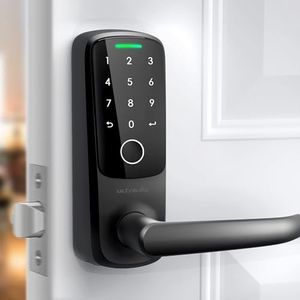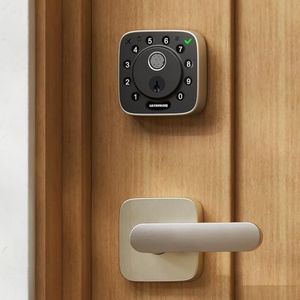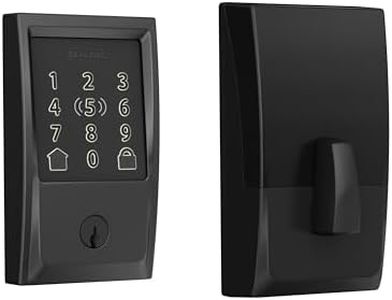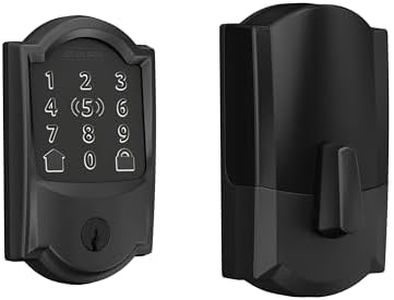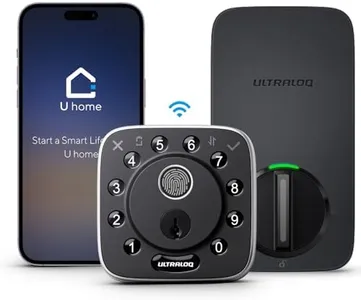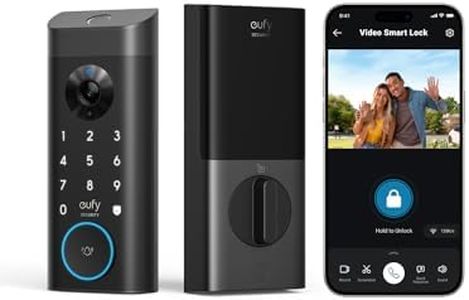We Use CookiesWe use cookies to enhance the security, performance,
functionality and for analytical and promotional activities. By continuing to browse this site you
are agreeing to our privacy policy
10 Best Smart Locks For Apartments
From leading brands and best sellers available on the web.Buying Guide for the Best Smart Locks For Apartments
When choosing a smart lock for an apartment, it's important to understand your specific needs and the features that will make your life easier without compromising security. A smart lock gives you convenience, extra control, and sometimes more peace of mind, but the best choice depends on your living situation, your door's compatibility, and your daily habits. Start by considering your apartment lease rules and how much you’re allowed to change or replace on the door. Then, focus on installation requirements, everyday usability, and how the smart features mesh with your lifestyle. Being clear on what you want—be it easy access for guests, integration with other smart devices, or hands-free entry—will help you avoid unnecessary features and find the best fit.Lock Type (Deadbolt vs. Lever/Knob Replacements)Lock type refers to whether the smart lock replaces just the deadbolt or if it replaces the entire door handle (lever or knob) as well. Deadbolt-only smart locks are designed to upgrade existing deadbolts—common in many apartments—without altering the whole lock mechanism. These are usually simpler to install and often do not require changes that might upset your landlord. Lever or knob replacements, on the other hand, change the entire hardware and may offer different aesthetics, but can be more complicated to install and less ideal for renters. Think about what your door currently has and whether your apartment agreement allows for hardware changes. If you want the least intrusive setup, a deadbolt-only option is often best.
Installation MethodInstallation method describes how a smart lock is fitted to your door. Some smart locks are designed for easy, tool-free setup and can be installed over your existing lock from the inside, while others require more complex installation and permanent changes to your door. For renters or those not comfortable with tools, models that fit over your current deadbolt with no permanent changes are generally preferable. If you have permission, you may consider locks requiring more in-depth installation for a sleeker look. Choosing the right method depends on your DIY confidence and limitations set by your apartment.
Unlock Methods (Keypad, Smartphone, Key, Biometrics, FOBs)Unlock methods determine how you can open the smart lock—these include using a keypad, a smartphone app, a physical key, biometrics like fingerprints, or special key fobs. Keypads allow you to set unique codes, which is great for sharing access with guests or service people. Smartphone apps often offer remote control and monitoring, while key fobs are handy for those who dislike using their phone for everything. Biometrics add a quick, touch-to-unlock convenience but may be overkill if all you want is basic smart access. Consider your routine—if you often forget your phone or keys, prioritize keypads or biometrics. If you want remote control, look for a strong app experience.
Connectivity (Bluetooth, Wi-Fi, Z-Wave, Zigbee)Connectivity explains how your smart lock communicates with your phone or smart home system. Bluetooth is good for direct phone-to-lock connections and is usually the simplest for basic setups. Wi-Fi connectivity allows for remote operation and integration with smart home assistants, but it may be more power-hungry. Z-Wave and Zigbee are protocols used by many smart home hubs; they’re ideal if you already have a home automation system. Choose Bluetooth if you want simplicity and don’t need remote access, Wi-Fi for broad features and away-from-home control, or Z-Wave/Zigbee for advanced integration with other smart devices.
Power Source and Battery LifeSmart locks are usually powered by batteries, and battery life can vary based on usage and connectivity type. Bluetooth-only models tend to have longer battery life (sometimes up to a year or more) because the connection doesn’t stay on all the time, while Wi-Fi-enabled locks might need battery changes every few months. Some locks have low-battery alerts or backup ways to open the door if the battery dies. If you prefer less maintenance, pick a lock with a reputation for long battery life and clear battery indicators.
Physical Key OptionDespite being smart, many locks still allow for a traditional key as a backup in case something goes wrong. Some models eliminate this for a fully keyless experience. If you value the peace of mind of always having a way in with a key, ensure that the smart lock you choose maintains this option. If you prefer total modern convenience with less concern for rare lockouts, you might go keyless, but always have a backup plan.
Door Compatibility and SizeSmart locks do not fit every door—thickness, hole size, and even the type of door (wood, metal) make a difference. Most brands provide compatibility guides; measure your door’s thickness, the backset, and check for any unusual fits before buying. If you live in an older apartment or have non-standard doors, double-check specs. Picking a lock that fits your current door hardware will make the installation smooth and avoid costly mistakes.
Smart Home Integration and Voice ControlIf you use assistants like Alexa, Google Assistant, or Apple HomeKit, or you plan to automate your home, check what systems the lock supports. Some smart locks work seamlessly with these platforms for voice commands or routines (like locking the door when you say 'goodnight'). Others might require extra hubs or may not integrate at all. If you’re building a smart home setup, choose a compatible lock from the start to save headaches later.
